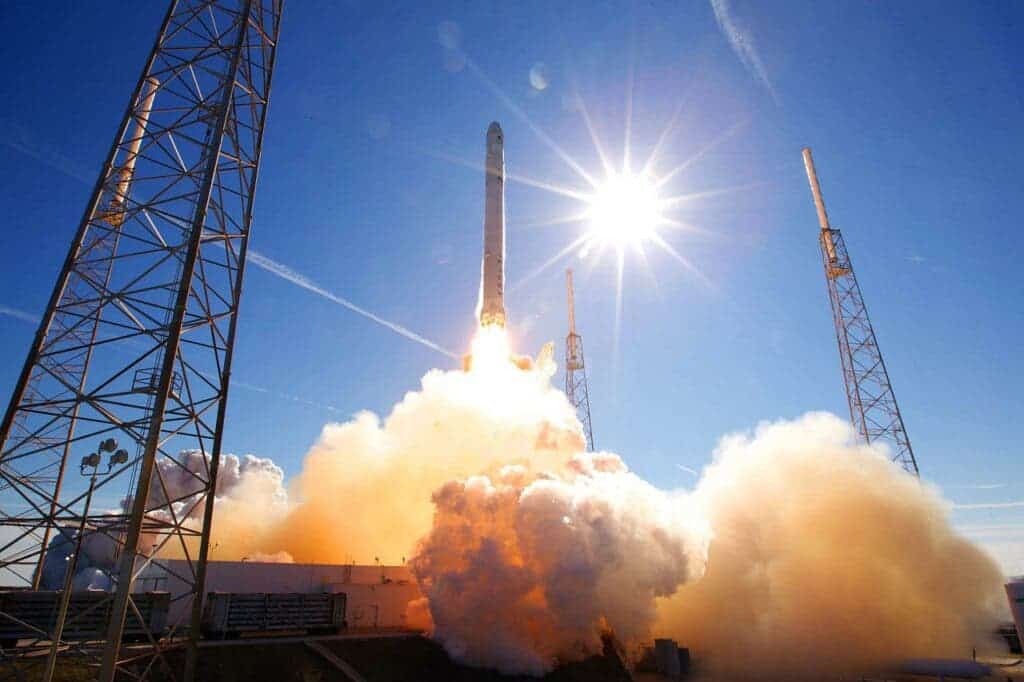The recent acceleration in space tourism has been hailed as a huge step forward for both humanity and science. The stuff of science fiction is becoming reality. However, at what expense to the environment and our home planet? A team from University College London (UCL), the University of Cambridge, and the Massachusetts Institute of Technology (MIT) set out to find out in a study published in the journal Earth’s Future.
Using a 3D model to explore the impact of rocket launches and re-entries on the environment in 2019, the researchers projected these impacts into the future based on the stated space tourism ambitions of billionaires like Elon Musk, Richard Branson, and Jeff Bezos.
What they found was that while impacts are currently small in terms of ozone loss, given the projection of what is to come in the billionaire race to space, that might not remain a trivial sum for much longer. The study found that while there is currently just a minor loss of total ozone owing to rockets, present growth patterns in space tourism point to the possibility of a future springtime ozone hole in the Arctic. This is due to the fact that stratospheric ozone is particularly vulnerable to contaminants from solid-fuel rockets, re-entry heating from spacecraft that are returning to the surface, and debris.
“Black carbon (soot) particles in the atmosphere absorb incoming shortwave radiation. This means that soot holds the radiation in the atmosphere,” study co-author Robert Ryan of UCL told ZME Science. “The result of this will be heating where the soot is located, however, the net result in terms of a global or surface temperature change remains uncertain because there are likely to be many other feedback processes.”
The researchers gathered data on the emissions produced from all 103 rocket launches in 2019 from around the globe, as well as information on reusable rockets and space debris re-entry to compute their model. Additionally, they projected a hypothetical future for a strong space tourism industry based on the recent achievements of space tourism companies Virgin Galactic, Blue Origin, and SpaceX, as well as Virgin Galactic’s anticipated yearly offerings of at least daily launches. The data were then incorporated into a 3D atmospheric chemistry model to explore the impact on climate change and the ozone layer.
“The higher the soot is in the atmosphere, the more efficient it is, per emitted mass, at retaining radiation in the atmosphere,” Ryan said. “This is because soot high in the atmosphere both stays in the atmosphere longer, and intercepts more incoming radiation. Our study calculates that because so much is placed directly into the stratosphere, rocket soot is 400-500 times more efficient at retaining heat than soot from all other sources. The annual radiative forcing of soot from rockets is already larger than that from the aviation industry.”
The researchers demonstrated that emissions from kerosene-fueled rockets account for the majority of the 3.9 milliWatt per square meter warming caused by soot from a decade of modern rockets. Due to the usage of kerosene by SpaceX and hybrid synthetic rubber fuels by Virgin Galactic, this figure more than doubled (7.9 milliWatt per square meter) after just three years of additional emissions from space tourism launches.
Blue Origin claims that its New Shepard rocket is more environmentally friendly as it only emits water as a byproduct, however, that doesn’t make it clean-burning, Ryan explained. Water is the only direct byproduct of burning liquid hydrogen fuel, but all rockets, including New Shepard, produce indirect emissions of nitrogen oxides due to heating of the atmosphere and the rocket itself. This occurs both as rockets head out through the atmosphere during liftoff and again as they or their components re-enter.
“Nitrogen oxides deplete stratospheric ozone and so in a large space tourism scenario even liquid hydrogen rockets are of concern,” Ryan said. “In addition, the producing liquid hydrogen is energy-intensive so currently has a large carbon footprint. While it burns slightly cleaner in a rocket engine, it is by no means a clean, green magic fuel for the space launch industry.”
The findings are of particular concern for the particles’ increased efficiency at holding in heat. The team discovered that the impact on the stratospheric ozone layer, under a scenario of daily or weekly space tourism rocket launches, threatens to undo the recovery seen after the successful adoption of the Montreal Protocol, a 1987 initiative that outlawed all compounds that weaken the ozone layer, and one of the most effective worldwide environmental policies in history.
“It is a very concerning scenario to consider such a major alteration of the radiation balance in the otherwise pristine upper stratosphere, should space tourism launches become a regular occurrence,” Ryan concludes.



